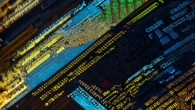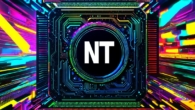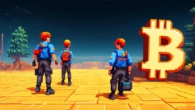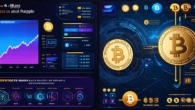
How can you create your own NFT
Table of Contents
- 1. Introduction to NFTs
- 2. Understanding the Blockchain
- 3. How to Create Your Own NFT
- 4. Best Practices for NFT Development
- 5. The Future of NFTs
- 6. FAQs
1. Introduction to NFTs
Non-Fungible Tokens (NFTs) have become the talk of the town in recent years. These unique digital assets have opened up a whole new world of possibilities for creators and investors alike. If you’re looking to get in on the action, but aren’t quite sure where to start, this guide will help you create your own NFT.
2. Understanding the Blockchain
Before we dive into the specifics of creating your own NFT, it’s important to understand what a blockchain is. A blockchain is a decentralized digital ledger that records transactions across multiple computers. It’s essentially an online version of a notebook that everyone can access and update simultaneously. When new information is added to the blockchain, it’s verified by a network of nodes (computers) before being added to the chain. This makes it extremely difficult for anyone to alter or manipulate the data, making it ideal for securely storing valuable digital assets like NFTs.
3. How to Create Your Own NFT
a. Selecting a Platform
There are several platforms available for creating and selling NFTs, each with its own unique features and pricing models. Some popular options include OpenSea, Rarible, SuperRare, and Mintable. When selecting a platform, consider factors such as user interface, transaction fees, and the types of assets you can create.
b. Creating Your Digital Asset
Once you’ve selected a platform, it’s time to create your digital asset. This could be anything from a piece of artwork to a collectible item or even a video game. The key is to make sure your asset is unique and valuable, as this will determine its worth on the open market.

c. Minting and Listing Your NFT
Once your digital asset is created, it’s time to mint and list it on the blockchain. This process involves converting your digital asset into an NFT that can be bought and sold on the platform. You’ll need to set a price for your NFT based on its perceived value, as well as any associated costs like transaction fees.
4. Best Practices for NFT Development
- Make sure your digital asset is unique and valuable
- Choose a reputable platform with a user-friendly interface
- Set a fair price based on the perceived value of your NFT
- Consider marketing your NFT to increase its visibility and attract buyers
5. The Future of NFTs
NFTs are still a relatively new technology, but they’re quickly gaining popularity and adoption. As more people and organizations begin to recognize their potential, we can expect the market for NFTs to continue growing and evolving. Some potential future applications of NFTs include:
- Real estate transactions
- Collectible sports memorabilia
- Digital art and collectibles
- Gaming and entertainment
6. FAQs
How do I price my NFT?
The price of your NFT should be based on its perceived value, as well as any associated costs like transaction fees.
What is the best platform for creating and selling NFTs?
There are several platforms available, each with its own unique features and pricing models. Consider factors such as user interface, transaction fees, and the types of assets you can create when selecting a platform.
How do I market my NFT to attract buyers?
Consider using social media, online forums, and other marketing channels to promote your NFT and attract potential buyers.
What are some potential future applications of NFTs?
NFTs have the potential to be used in a wide range of industries, including real estate, sports memorabilia, digital art, gaming, and entertainment.
Summary
Creating your own NFT can be a fun and exciting way to monetize your digital assets and tap into the growing market for cryptocurrency. By following the steps outlined in this guide, you’ll be well on your way to creating a successful NFT that can be bought and sold on various platforms. Remember to price your NFT fairly, choose a reputable platform, and consider marketing your asset to increase its visibility and attract buyers. With the right approach, NFTs have the potential to revolutionize the way we think about ownership and value in the digital world.







